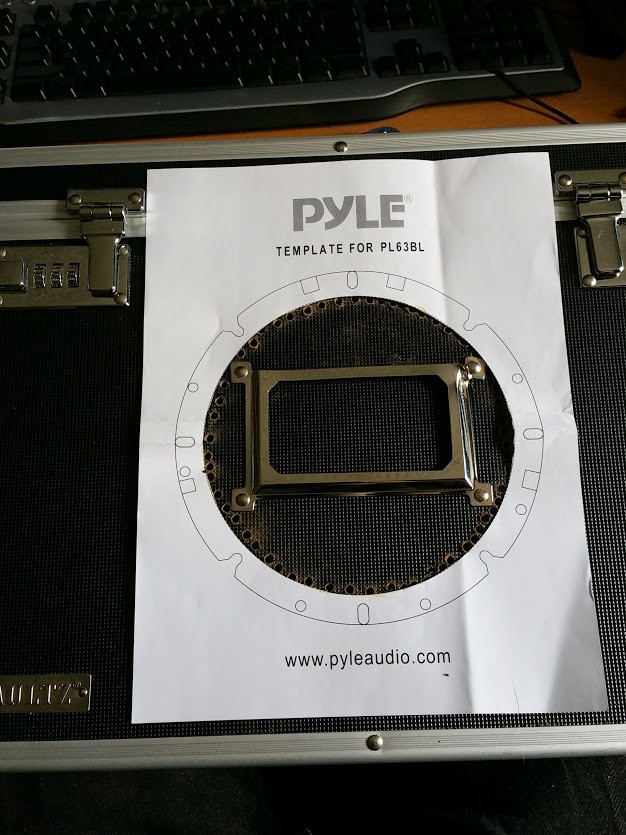A little over four years ago, I was pulled over by the police on my old college campus for riding my bike with headphones on. I wasn't ticketed, but I WAS inspired to create stereo system for my bike. Several years and revisions later (most of them being caused by having been hit by a heavy, four-wheeled vehicle) I'm on version 4.0; my most powerful version to date!
This beast weighs in at around 25lbs and packs 200 Watts of speaker power (compared to the 50w of V3). The total cost of parts comes in at around $140 for everything, but you could easily make it for cheaper if you wanted to make it out of PC speakers (which I did for V1 and V2) or stuff you had around the house and parts you pulled from your sister's car without asking first but replaced with cheap crap later, telling her you upgraded it for her (V3).
 Victor Frost
Victor Frost That bit of paper has a hole that is cut out to be the size and shape of the part of the speaker that sinks into whatever will be holding it and shows the mounting holes for the speaker. If you bought car speakers like I did something similar will be included. If not, measure the diameter of that part of the speaker and make your own template. Use this to mark out your holes.
That bit of paper has a hole that is cut out to be the size and shape of the part of the speaker that sinks into whatever will be holding it and shows the mounting holes for the speaker. If you bought car speakers like I did something similar will be included. If not, measure the diameter of that part of the speaker and make your own template. Use this to mark out your holes.